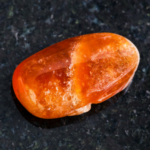The Camino de Santiago, or “Way of Saint James,” is one of the most important pilgrimage routes in the Christian world. At its heart lies Santiago de Compostela, in northwestern Spain, where tradition holds that the remains of Saint James the Great, one of the apostles of Jesus, are entombed. For over a thousand years, men and women from across Europe—and now from every corner of the globe—have walked this road, drawn by faith, curiosity, tradition, or simply the call of the open trail. To walk the Camino is to join a living river of humanity, one that has flowed for centuries toward the cathedral where Saint James rests.
What Pilgrims Experience
The Camino is not a single road but a network of routes, stretching across Spain and beyond, converging on Santiago de Compostela. The most famous is the Camino Francés, beginning in the Pyrenean town of Saint-Jean-Pied-de-Port and running about 780 kilometers to the cathedral. Walking this route takes four to six weeks, though some pilgrims walk shorter sections or begin from different points.
The first thing a pilgrim notices is the rhythm of the road. Days are spent walking through fields, mountains, vineyards, and villages. Each night, pilgrims gather in albergues (hostels) to rest, share meals, and exchange stories. The trail is marked with yellow arrows and scallop shells, the symbol of Saint James, guiding travelers step by step.
Spiritually, the Camino offers something few modern experiences do: time. Time to walk in silence, to reflect on life, to pray, or to simply feel the road beneath one’s feet. Conversations with fellow pilgrims spring up naturally—sometimes deep, sometimes lighthearted—but always marked by a sense of shared purpose.
At the end of the journey lies the Cathedral of Santiago de Compostela. Pilgrims arrive, often weeping with joy or exhaustion, and step into the square before the great façade. Inside, the tomb of Saint James invites prayer and quiet reflection. Many attend the pilgrim’s Mass, where their arrival is acknowledged, and some are fortunate enough to see the botafumeiro, the massive incense burner swung through the cathedral’s nave. For many, it is the culmination of weeks of struggle, beauty, and personal discovery.
Why Pilgrims Walk
People come to the Camino for different reasons. For medieval pilgrims, walking was an act of penance or devotion, a way to seek forgiveness or healing. Today, motivations vary: some come for faith, others for adventure, others for the cultural and historical richness of the route. Many come seeking clarity during times of change—retirement, loss, transition, or searching for purpose.
The Camino teaches by stripping life down to its basics. Each day is reduced to walking, eating, sleeping, and caring for the body. Pilgrims carry only what they need in their packs, learning quickly how little is necessary to live. This simplicity is part of the road’s quiet wisdom.
Planning a Pilgrimage
For those considering the Camino, preparation begins with honesty about one’s abilities and intentions. The Camino is not a casual stroll; it demands physical endurance, mental resilience, and flexibility. Still, it is accessible to people of many ages and backgrounds, provided they prepare thoughtfully.
Choosing a Route:
- Camino Francés: The classic route, rich in community, infrastructure, and history.
- Camino Portugués: A shorter, quieter route beginning in Lisbon or Porto.
- Camino del Norte: A challenging coastal path with stunning views.
- Via de la Plata: A long, less-traveled route from southern Spain.
Physical Preparation:
Walking long distances day after day requires training. Pilgrims should begin walking weeks or months ahead of time, gradually building up distance with a loaded backpack. Good footwear is essential; blisters are the most common ailment on the Camino.
Packing:
The pilgrim’s rule is simple: carry only what you need. A backpack of 7–9 kg is typical. Essentials include sturdy shoes, lightweight clothing, rain gear, a sleeping bag, first-aid supplies, and a reusable water bottle. Many pilgrims carry a scallop shell tied to their pack, the emblem of Saint James.
Documentation:
Pilgrims carry a credencial, or pilgrim’s passport, which is stamped at each stop along the way. This serves as proof of their journey and allows them to stay in pilgrim hostels. At the cathedral, those who have walked at least the last 100 kilometers (or cycled 200) can present their credencial to receive the Compostela, the official certificate of pilgrimage.
Timing:
The Camino can be walked year-round, though spring and fall are the most favorable seasons. Summer brings heat and crowds, while winter brings cold and closed facilities in some regions.
The Spiritual Landscape
The Camino is lined with churches, chapels, and crosses, reminders that this road is more than a trail—it is sacred ground shaped by centuries of devotion. Pilgrims pass through medieval towns like Burgos and León, each with grand cathedrals, as well as tiny villages where the church bell still calls the faithful. The land itself becomes a kind of scripture: the wide plains of Castile, the green hills of Galicia, the mountains that rise and fall like verses in a psalm.
The Camino is also a school of humility. Pain, blisters, fatigue, and weather test the body and spirit. Yet each hardship is met with the kindness of strangers: a shared meal, a helping hand, or a word of encouragement. Many pilgrims speak of “Camino angels”—ordinary people whose simple acts of generosity carry deep meaning.
Arriving in Santiago de Compostela
The arrival in Santiago is the emotional high point of the pilgrimage. Standing in the Plaza del Obradoiro, pilgrims behold the cathedral’s grand towers, knowing they have reached the goal toward which every step has pointed. Entering the cathedral, many descend to the crypt to pray before the silver casket that holds the relics of Saint James. Others embrace the statue of the apostle above the altar, an ancient gesture of greeting and reverence.
The pilgrimage does not end here, though. Some continue to Finisterre, the “end of the world” on Spain’s Atlantic coast, where the tradition of burning one’s worn-out clothes or boots marks a symbolic rebirth. Others simply carry the lessons of the road back into daily life, changed by the journey.
Final Thoughts
To walk the Camino de Santiago is to take part in one of humanity’s oldest traditions: the journey to a sacred place. Whether motivated by faith, personal search, or cultural interest, pilgrims find themselves woven into a story that stretches back more than a millennium. The Camino is not about speed, achievement, or perfection. It is about walking—one step, one day at a time—toward a goal that is both physical and spiritual.
The tomb of Saint James awaits in Santiago, but the deeper gift of the Camino is found along the way: in the rhythm of footsteps, the kindness of strangers, the simplicity of life on the road, and the discovery of one’s own inner strength.
For those who choose to walk it, the Camino is not merely a path across Spain. It is a path into the heart.






